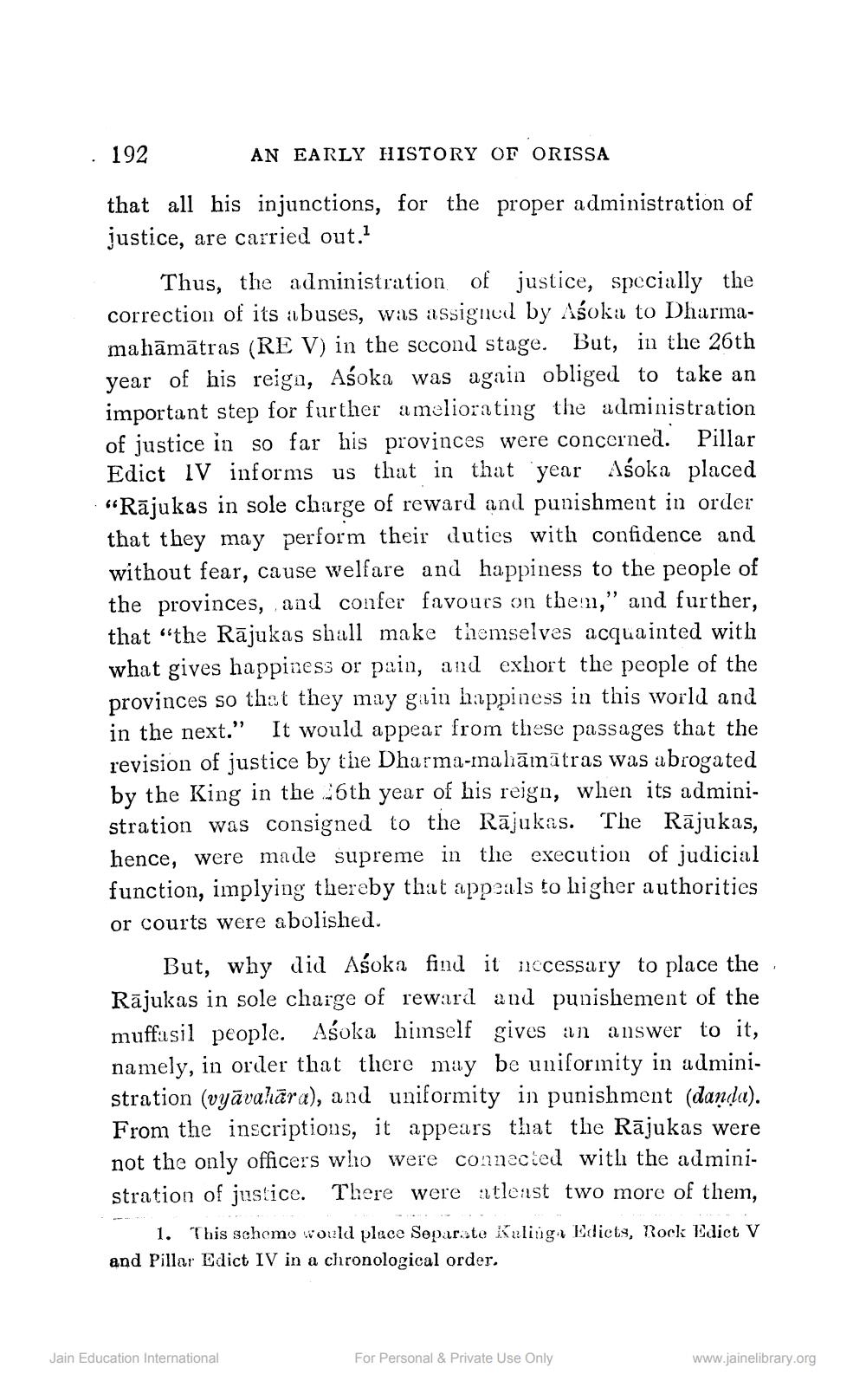________________
· 192
AN EARLY HISTORY OF ORISSA that all his injunctions, for the proper administration of justice, are carried out.
Thus, the administration of justice, specially the correction of its abuses, was assigned by Aśoka to Dharmamahāmātras (RE V) in the second stage. But, in the 26th year of his reign, Asoka was again obliged to take an important step for further ameliorating the administration of justice in so far his provinces were concerned. Pillar Edict IV informs us that in that year Asoka placed “Rājukas in sole charge of reward and punishment in order that they may perform their duties with confidence and without fear, cause welfare and happiness to the people of the provinces, and confer favours on them,” and further, that "the Rājukas shall make themselves acquainted with what gives happiness or pain, and exhort the people of the provinces so that they may gain happiness in this world and in the next.” It would appear from these passages that the revision of justice by the Dharma-malāmātras was abrogated by the King in the 6th year of his reign, when its administration was consigned to the Rājukas. The Rājukas, hence, were made supreme in the execution of judicial function, implying thereby that appeals to higher authorities or courts were abolished.
But, why did Asoka find it necessary to place the Rājukas in sole charge of reward and punishement of the muff: sil people. Asoka himself gives an answer to it, namely, in order that there may be uniformity in administration (vyāvahāra), and uniformity in punishment (danda). From the inscriptions, it appears that the Rājukas were not the only officers who were connected with the administration of justice. There were :atleast two more of them,
1. This schemo would place Separate Kuling Edicts, Rock Edict V and Pillar Edict IV in a chronological order.
Jain Education International
For Personal & Private Use Only
www.jainelibrary.org




